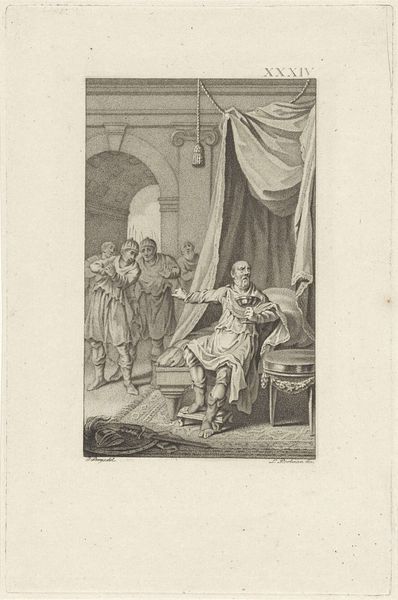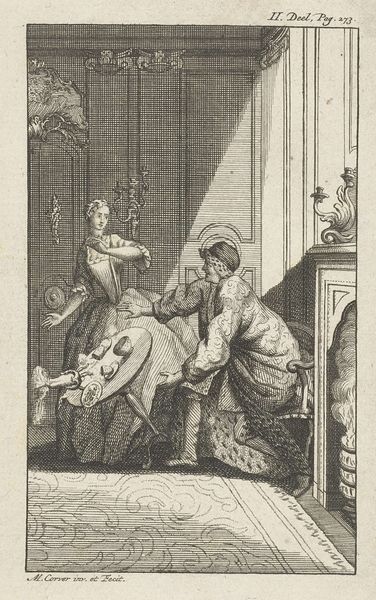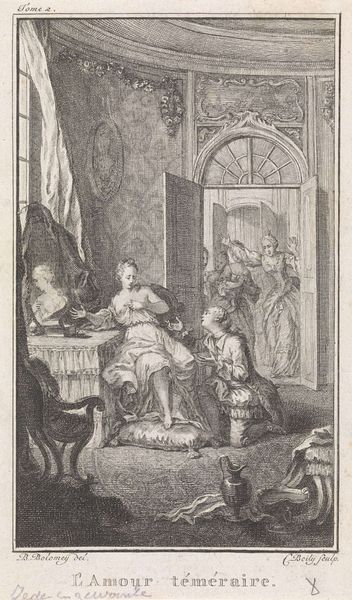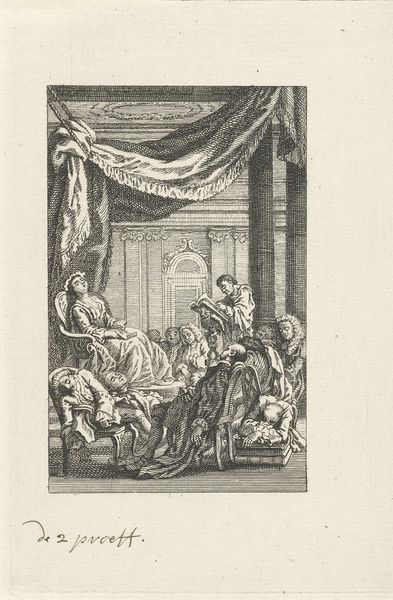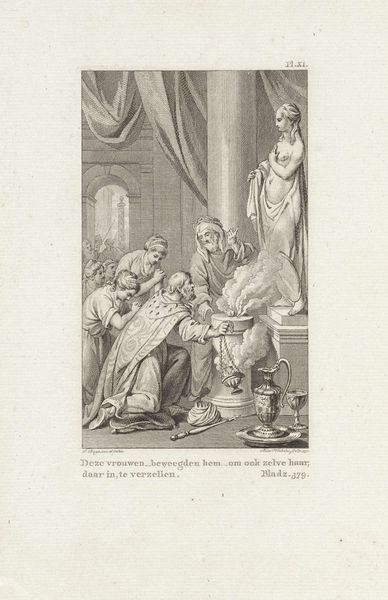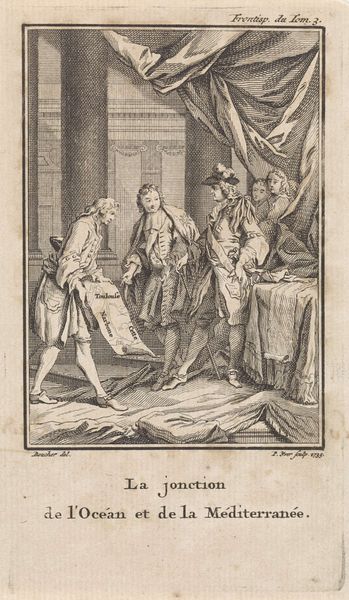
Dimensions: height 235 mm, width 155 mm
Copyright: Rijks Museum: Open Domain
Curator: This engraving, titled "Simson en Delila," was created around 1797 by Reinier Vinkeles. What strikes you first about this depiction? Editor: The immediate thing is its claustrophobia, how the scene is cramped and shadowed. You feel trapped along with Simson in this moment of betrayal. The artist’s strategic use of negative space—or rather, the lack thereof—is extremely effective. Curator: Absolutely. And that claustrophobia serves the drama so well. Vinkeles presents a very specific historical interpretation through his art. How do you feel about Delilah here? It seems her own subjugation could be playing into her treachery. Editor: I find it disturbing to see Delilah seemingly complicit. While I think the socio-cultural background is interesting, I don’t think it excuses her, in light of present debates regarding consent, agency, and intersectionality. It's impossible to ignore how this narrative reinforces negative stereotypes. Curator: It does prompt necessary questions regarding the patriarchal interpretations and societal values that shaped this piece, and continues to inform current perceptions of it. It certainly begs consideration of the institutions of power at the time that influenced this particular rendering of Delilah. What would a feminist reading of this work entail? Editor: For starters, questioning the inherent power dynamics and patriarchal framing within the source material, while examining and critiquing traditional, biased interpretations, also resisting the notion of Delilah as simply a seductress or traitor, in favor of seeing her within a complex web of societal pressures and power dynamics, considering also if she was offered protection, power, resources by acting. Curator: The engraving’s detail also creates this immediacy. Delilah seems a cold tool to this barber, while Simson writhes in subjugation; his vulnerability and lack of agency, very clearly demonstrated. Editor: It leaves you considering who benefits, and what commentary, consciously or unconsciously, Vinkeles embeds into his work on a macro level, about power, loyalty and the dangers inherent in imbalanced relationships. A heavy moral burden on one, seemingly none for others. Curator: Thank you. This dialogue invites continuous critical evaluation within shifting historical landscapes. Editor: Indeed. Thank you. There are very contemporary resonances embedded in historical reflections if we are but diligent in discovering them.
Comments
No comments
Be the first to comment and join the conversation on the ultimate creative platform.


